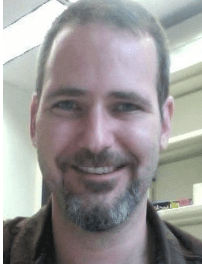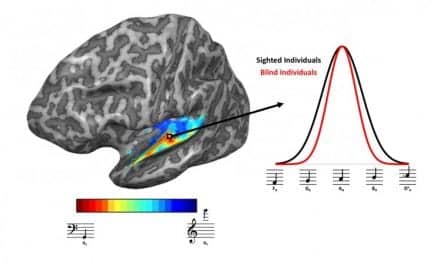By Linda Satter, Writer, UAMS
The Hearing Norton Sound study, which focused on school-based hearing screening programs in rural Alaska, showed that referring children to specialists via telemedicine provides significantly quicker access to hearing care than referring them to primary care providers.
The findings from this study led by Susan D. Emmett, MD, MPH, and Samantha Kleindienst Robler, PhD, AuD, who serve as director and associate director, respectively, of the new University of Arkansas for Medical Sciences (UAMS) Center for Hearing Health Equity, were published June 15 in The Lancet Global Health. An article detailing the research appears on the UAMS website.
Emmett was one of the leaders of the Hearing Norton Sound study, which found that referring children to specialists via telemedicine for hearing care in Alaska provides significantly quicker access to follow-up care than referring them to primary care providers.
The randomized, controlled trial, conducted from 2017 through 2020 in 15 rural Alaskan communities with the aid of funding from the Patient-Centered Outcomes Research Institute (PCORI), is believed to be the first to demonstrate that telemedicine can reduce a key rural health disparity in access to care. Emmett says the study has implications for rural areas across the globe, including in Arkansas, and for improving access to specialists for other preventable health conditions.
“Even if children are identified with hearing loss at school, they often never receive the care that they need. This loss to follow-up from school screening programs, as well as a dearth of specialists in rural areas, exacerbate barriers to care for rural children,” Emmett said. “The purpose of this study was to test whether telemedicine can address this challenge, providing a way for rural children to promptly enter the healthcare system to receive the specialty care they need.”
Emmett is an associate professor in the UAMS College of Medicine Department of Otolaryngology-Head and Neck Surgery and the Fay W. Boozman College of Public Health Department of Epidemiology. She specializes in hearing loss disparities and ways to improve access to care for people in underserved areas.
She has a longstanding collaboration with Robler, an assistant professor in the UAMS College of Medicine Department of Otolaryngology-Head and Neck Surgery. Robler also serves as a population health researcher at Norton Sound Health Corporation, a tribally owned and operated independent not-for-profit organization that is the tribal health partner for the study.
“This trial has notable broad public health implications,” Emmett said. “While we focused on school hearing screening, the model of specialty telemedicine referral is applicable to other preventable health conditions. Importantly, this novel telemedicine model promotes early access to specialists in an effort to decrease health disparities.”
The Alaskan study, which involved about 1,500 children in the Bering Strait School District in northwest Alaska, found that children in the telemedicine specialty referral pathway received hearing care 17.6 times faster than those in the standard primary care referral pathway.
“We compared the standard primary care pathway to a new telehealth referral pathway,” Emmett said. “We found that only about 30% of the children in the standard pathway received follow-up care, compared to almost 70% in the telehealth referral pathway. So it made a huge difference in getting children the follow-up care they needed, and it happened quickly.”
“Childhood hearing loss has well known, profound implications for language development, school achievement, and future employment opportunities,” according to the study, for which Emmett was the lead author with 14 other collaborators. “Some populations experience a disproportionately high burden of childhood hearing loss, including rural Alaska Native children, among whom there is a prevalence of up to 31% compared with 1.7-5% in the general US population.”
It continues: “Similar to low-resource settings globally, the majority of hearing loss in Alaska is related to infection,” with inflammation or infection in the middle ear four to five times more common in rural Alaska Native children, despite pneumococcal vaccinations.
The World Health Organization (WHO) estimates that there are 1.6 billion people living with hearing loss worldwide. This equates to 1 in 5 people in the world, and by 2050 that number is projected to increase to 1 in 4 people. Sixty percent of all childhood hearing loss is preventable, and 75% of childhood hearing loss is preventable in low-income and middle-income countries, where infection-related causes are common.
Robler noted that school-based health programs often provide the only access to preventive services for underserved children in rural areas, and school hearing screening is often state mandated, such as in Alaska.
“A recent survey of US rural health clinics highlighted too few specialty providers as the most frequent reason for difficulty establishing specialty referrals, followed by poor appointment availability and distance to travel,” the article states.
It also states, “Telemedicine has become integral to health care in the current era. The Alaska Tribal Health System addressed geographical barriers to specialty care through a telehealth network developed nearly 20 years before COVID-19 generated momentum for telehealth.”
Robler added, “In partnership with Bering Strait School District and Norton Sound Health Corporation, we were able to modify existing telemedicine infrastructure and improve timely access to care for rural Alaskan children, making Alaska a model for how telemedicine can be used to promote early access to specialists for children across the US.”
“Central to the study were our community stakeholders and partners, including Norton Sound Health Corporation, Bering Strait School District and the Alaska Stakeholder Team, which provided countless hours of guidance and insight crucial to the success of the trial,” said Robler. “Paul Ivanoff was a stakeholder on the study team and was integrally involved from study inception to dissemination,” she added.
“I’m a proud Inupiaq father and community member from Unalakleet, Alaska,” said Ivanoff. “It was amazing to partner with Robler, Emmett, and the other team members. This was an important project that will have a far reaching and long-lasting impact on our children’s ability to reach their full potential through early detection of any hearing loss issues.”
Original Paper: Emmett SD, Platt A, Turner EL, et al. Mobile health school screening and telemedicine referral to improve access to specialty care in rural Alaska: A cluster-randomised controlled trial. The Lancet Global Health. 2022;10(7):E1023-E1033.
Source: UAMS, The Lancet Global Health
Image: UAMS






